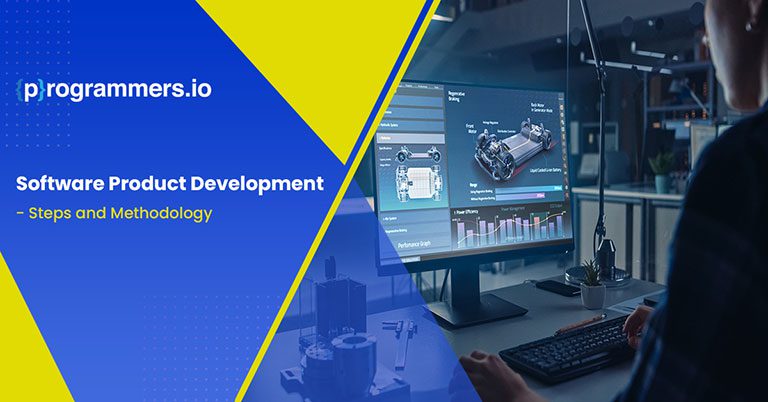The Steps and Methodologies of Software Product Development
The world of product development is ripe with new experiences and solutions. Developers are unearthing new ways and techniques to develop projects and lead the wave of change. Creating a new software solution requires proper planning coupled with a proper approach. Ever since Google first introduced the concept of creating a prototype, many businesses have worked towards creating a collaborative solution.
With the recent innovations, businesses now have the liberty to test multiple features and ensure that all end products meet the dynamic requirements of all users. of The implementation testing features has allowed software developers to create newer products soon and market them in a cost-effective manner. Newer software development products are welcomed with open arms in the market, which is why businesses looking to sell new products should go forward with the change.
In this article, we take a look at software product development and the steps and methodologies involved in it. We also study the recent changes in the sphere and how these changes have evolved with time.
Understanding Software Product Development
Software product development, from a beginner’s viewpoint, is the creation of a new software solution with novel ideas and features. The process could either be related to upgrading a current solution or creating an entirely new product and marketing it to users.
Read: Consult software development company
The new products and solutions developed in the market can give users a number of new options and can promise a better customer experience.
How to Create a Software Development Plan
A software development plan is the first step in the development process and is usually responsible for setting the tone for projects to come. The processes here include:
Envisioning a Product
The first step to follow in the process is to envision a product and then present a common goal related to that product. The product vision should be based on an ultimate goal.
The primary goals for the projects can be developed when the mission and vision statements are prioritized and are in place. These solutions may be a bit hazy at first, but they can easily be integrated with time.
Determine a Roadmap
The next step in the process is to determine a roadmap that you plan to follow for the software product development process. A blueprint is necessary to take your project to completion, which is why you should prepare one beforehand.
Your product team can prepare a roadmap that prioritizes all primary topics that you plan to address in the roadmap. You can define targets in the roadmap and also set dates for all objectives you plan to meet. Additionally, you should set your focus on delivering value to customers and responding to product goals.
Once the roadmap is ready, you should look to implement it strategically. Strategic implementation of the roadmap will lead to the best results and maximum impact. Make sure to record input from the sales staff, the support unit, and from customer surveys. All areas where progress is needed should be noted down so that improvements are made in due course.
Product Development Steps
Once a plan is created, you move towards the actual steps of software product development.
Step 1: Generating an idea
The first step in the software product development process is to generate an idea. You should generate a brilliant concept that makes it easier for users to develop and implement. The idea should be considered and evaluated from all angles before it is considered for implementation. You want to make sure that there are no errors in the system before implementation.
Step 2: Do a Requirement Analysis
The second step is to run a requirement analysis. The requirement analysis is also known as a feasibility study and would measure all that is required for the project to be carried out through each stage of the development lifecycle.
The study is carried out to understand the requirements during the course of the project development process, and to identify areas where project development can improve. The requirement analysis highlights all the different verticals of project development and gives a fair idea of what to expect.
Step 3: Design Product
The next step after feasibility analysis is to design your software solution. The design process is of utmost importance, as it oversees the design of your software architecture and the conceptualization of the overall system. The UI and UX of your solution will also be part of the discussion here.
Step 4: Development and Coding
Once the design is finalized, the next step in the software development process is to move toward development and coding. The coding and development of your project need to be thorough in nature, so that nothing goes unnoticed.
The product development and coding step take the longest time to complete because this is where the project goes from an idea to actual software. Make sure you have a proper team to oversee the implementation process.
Step 5: Integration and Testing
The next or final step is to test the product and then integrate it within current solutions. The soft launch can follow a thorough testing process so that nothing is left unchecked. The testing process should check the runtime of the product and the ability to provide convenient solutions.
When it comes to project methodology, developers can choose from waterfall, agile, and scrum. Agile is known for its software quality guarantee and is the preferred choice for many. Software product development is no mean feat, and we hope this guide on the steps to follow can help you create a minimum viable product.
How can we help you?
We have hundreds of highly-qualified, experienced experts working in 70+ technologies.









